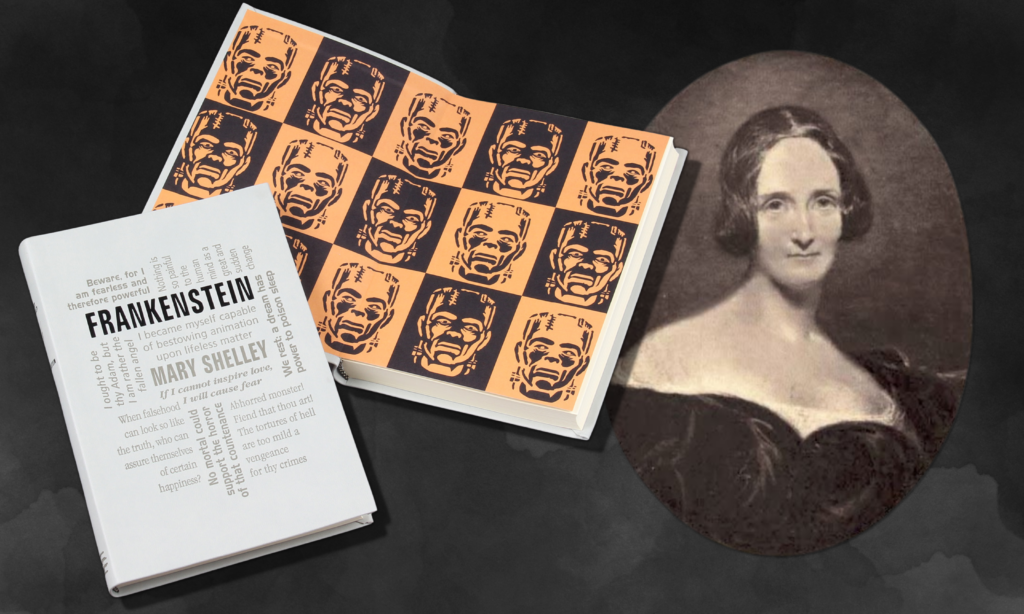
Frankenstein is about as classic as classic gets, and available now in our Word Cloud edition. Here’s the story behind the author and creation of one of the most chilling horror stories ever written.
Destined for Greatness
Born in 1797, Mary Wollstonecraft Shelley was probably destined for greatness in the letters or the arts. Her father was influential political scientist William Godwin, and her mother was proto-feminist author Mary Wollstonecraft, who wrote A Vindication on the Rights of Women. She died a month after giving birth. Raised by her father, the younger Mary ran away with the much older Romanticist poet Percy Bysshe Shelley when she was 17. After Shelley’s wife committed suicide over her husband’s affair with a teenager, Mary Godwin became the new Mrs. Shelley.
Always a Writer
By her early twenties, Shelley enjoyed a successful career as a freelance travel writer. She moved into literature — poetry and fiction — when her husband asked her to be his first reader and personal editor.
The Romantics
Most literary movements or “schools” are usually just a collection of writers doing similar things, with no relation to one another. Not the Romantics. Shelley was close friends with Lord Byron, and in 1818 the Shelleys and the former George Gordon spent a summer on Lake Geneva in Switzerland together. One day, to kill time during a rainstorm, the group read German ghost stories, and Lord Byron suggested they all write their own to see whose was best. Mary Shelley, long a fan of the Brothers Grimm, was particularly inspired, and wrote a story about a mad scientist “playing God” and creating a creature out of dead people’s body parts brought to life, which would inspire her first novel.
A Sci-Fi First
Later that year, Shelley published Frankenstein, Or the Modern Prometheus. Dr. Baron von Frankenstein builds a humanoid out of dead parts, but that creation becomes a monster instead. The book is really about the dangers of science and industry (as England was just beginning its Industrial Revolution). In discussing moral issues with a fantastical scientific background, Frankenstein is considered by many literary experts to be the first work of science-fiction.
A Horror First
Frankenstein is also considered the birth of horror fiction. It certainly bears all the hallmarks of horror stories. After all, it’s about a deranged doctor stealing around at night, tearing up graveyards and ripping bodies out of the ground to rob them of their organs and limbs, which he sews together in a massive castle.
A Dystopian First
There’s also a case to be made for Shelley as the inventor of dystopian science-fiction. In 1826, she published The Last Man, set in a 21st century Europe in which humanity is nearly extinguished by a mysterious global plague.
Even A Vampire First?
That fateful day at Lake Geneva also led to the first modern bit of vampire fiction. John William Polidori was also a part of the “ghost story” contest. In 1819, he published The Vampyr, which pulls from Eastern European folk tales to establish the tropes of vampires as creepy, night-stalking blood drinkers.
Crave more scary literary thrills? Then check out the genuine, original article, with our special edition of Mary Shelley’s Frankenstein, available now from Canterbury Classics.








